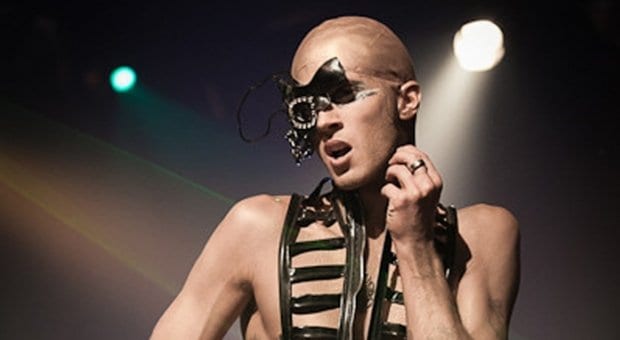Now in its fourth year, Babes in Space has become an unstoppable force for all things naked and nerdy. Part of the subgenre “Nerdlesque,” the evening is a far cry from the usual tassels-on-titties fare. Producer Red Herring (aka Reena Smith, who also runs the Toronto School of Burlesque) helms the mammoth event.
Xtra: You’ve now produced three shows on this theme. Why bring it back a fourth time?
Red Herring: Last year was supposed to be the final one. There wasn’t a lot we hadn’t covered on the Star Trek/Star Wars theme, and I didn’t want to have people seeing the same things over and over. But there was such a huge pushback from the audience when I announced it would be the last time, I decided to bring it back. I was basically bullied into doing it. The challenge has been to expand the concept slightly while keeping things everyone loved. We’re aiming for a retro sci-fi feeling this year, with things like Barbarella, Raquel Welch, terribly low-budget robots, ray guns and UFOs. But also keeping the stuff everyone loves, like Spock and the can-can dancing Ewoks.
This year’s theme is Where No Man Has Gone Before. Beyond the obvious Star Trek reference, is it saying anything about the event itself?
It’s a big lie, really. I don’t think there’s a single person in our cast where no man has gone before. But it allows us to play on the idea of going on a fantastic journey together. And make dick jokes.
It seems you can’t turn a corner without wandering into the middle of a burlesque show these days. What makes the difference between good burlesque and bad burlesque in your mind?
Good burlesque is always created with the audience in mind. You don’t need a million rhinestones on your costume, but you need to realize the responsibility you have to your audience. That’s the difference between a good performer and someone who’s up there working through their own psychological shit onstage, making everyone spend 20 bucks to see you go through your therapy in public.
You’re known for hiring an especially diverse group of performers. Why is that important to you?
I like my shows to be diverse, but that’s also part of the sci-fi tradition. If you look at Gene Roddenberry, who created Star Trek, he was known for putting aliens and black people and white people together on the bridge because he wanted to bring home the fact everybody can work together. Burlesque in Canada is generally fairly diverse in terms of body image, sexual orientation and gender identification. Of course, there’s the occasional person you see where you know she only got hired because she’s skinny and pretty. But that’s going to happen in any industry where women are taking off their clothes, no matter how much feminist theory you dress it up in.
Babes in Space: Where No Man Has Gone Before
Sun, Aug 25 and Thurs, Aug 29, 8pm
Revival, 783 College St
$17 advance, $25 door
babesinspace4.eventbrite.com


 Why you can trust Xtra
Why you can trust Xtra


